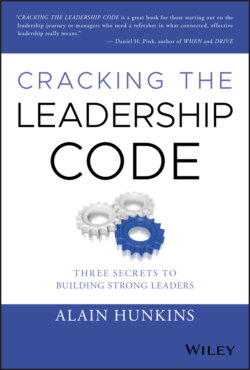Читать книгу Cracking the Leadership Code - Alain Hunkins - Страница 31
SCIENTIFIC MANAGEMENT'S INFLUENCE ON BUSINESS SCHOOLS
ОглавлениеDid you ever wonder where business schools came from? They haven't been around forever. Harvard University was the first American university to offer a Master's in business administration. Founded in 1908, it based its first-year curriculum on Frederick Taylor's principles of scientific management. The program was built on analysis, synthesis, logic, rationality, and efficiency.
The MBA approach to managing a business was built on the belief that an organization (and its people) functioned like a machine. With proper tinkering on the part of management, the machine could be engineered for the ultimate prize: continuous peak efficiency. Every challenge the organization faced was an engineering problem to be solved. Sound familiar?
If you listen closely to the language of business, you can still clearly hear the language of engineering. Its mechanistic, dehumanizing influence has affected beliefs, words, and behaviors in the workplace for more than a century. Some common examples of this include these concepts:
Your job fits in a box on the bottom of the org chart.
You report to your superior. You are his or her subordinate. You report up to that person.
You are a rank- and-file employee.
If we don't have direct reports, we may have dotted-line responsibilities.
Salaries are one of the biggest costs we incur around here.
We don't have enough human resources.
Let's deploy for this new product launch.
I'm going to send this up the food chain for approval.
Let's interface before the 3 p.m. meeting.
Get the proposal ready double-time!
It's important that we drill this down to the front lines.
We'll get this out to the masses.
How would it make you feel to know that there are leaders who are meeting together, trying to find the best way to drill stuff into you, along with the rest of the frontline masses?
In large organizations, personnel networks were modeled on the military, with layer on layer nested into the chain of command. Control was established through rigid hierarchy, structures, and processes. Rules were designed to maintain order and the status quo. Going outside the lines was considered a rebellious act and insubordination.
In this system, newly minted MBA graduates would join “high-potential” programs in large companies. Once on board, they would rely on the strengths that got them jobs in the first place: analysis and problem-solving. They'd in turn become the next generation of business leaders, continuing this cycle of mechanical thinking they'd known for their whole professional lives.
The rule of thumb was that employees were expected to be loyal and obedient. Junior employees knew their place: wait your turn, pay your dues, put in your time, and you'll be rewarded with a chance to climb the ranks. Then, you'd gain more money, prestige, power, a better parking space, and the corner office.
